The Portable William Blake (60 page)
Read The Portable William Blake Online
Authors: William Blake

The Bible tells the story of a man “perfect and upright, and one that feared God and eschewed evil.” His “substance” was very great, and his piety so preeminent among men that Satan was allowed to try it, to see whether his faith in Cod could withstand deprivation and bitter physical suffering. Job nearly reached the bottom of the pit of desolation; he lost everything. Indeed, he nearly failed the test. When his pious friends, shocked by his lamentations and reproaches against the Divine will, sought to convince him that his suffering was a punishment for sin, Job rebelled. Only when the voice of the Lord came to him out of the whirlwind and overwhelmed Job by His power and majesty, did he submit to God’s mysterious permission of evil. Yet it is the human cries with which Job struggles to believe in so inscrutable a violation of human happiness and good faith that give the story in the Bible its eloquence and its poetry.
Blake’s vision begins with an attack on Job himself for
his own love
of worldly goods and his consequent self-righteousness. The Bible portrays a man who was virtuous and who was made an example, despite his own goodness, of God’s eternal dominion. Blake portrays a man who went wrong from the beginning, for he sought prosperity rather than vision. The drama takes place all within his own soul. In the Bible Satan is an agent of God, albeit a jealous agent; and as an agent, has liberty to try men for the edification of God. The Biblical Satan, in short, is really a court jester to Majesty. Blake’s Satan is the God of this world, the God who tempts men to yield their real humanity by leading them after material goals. Satan is beaten only when Job recovers his spiritual sight, his true human understanding that his material “substance,” which in the Bible is the reward for goodness and the mark of human success, is sterile and corrupting.
his own love
of worldly goods and his consequent self-righteousness. The Bible portrays a man who was virtuous and who was made an example, despite his own goodness, of God’s eternal dominion. Blake portrays a man who went wrong from the beginning, for he sought prosperity rather than vision. The drama takes place all within his own soul. In the Bible Satan is an agent of God, albeit a jealous agent; and as an agent, has liberty to try men for the edification of God. The Biblical Satan, in short, is really a court jester to Majesty. Blake’s Satan is the God of this world, the God who tempts men to yield their real humanity by leading them after material goals. Satan is beaten only when Job recovers his spiritual sight, his true human understanding that his material “substance,” which in the Bible is the reward for goodness and the mark of human success, is sterile and corrupting.
We owe the elucidation of Blake’s symbolism in this work to the English scholar, Joseph Wicksteed. He discovered that the theme of Blake’s designs—the struggle between the “natural” and the spiritual, or visionary man—is plotted on the difference between right and left. The right hand or foot stands for the visionary, un-material, prophetic character; the left hand or foot for the worldly, the conformist and the material. Where Job is shown with his right hand or foot ahead of his left, it means that the spiritual side of his human nature is in the ascendancy. This scheme is followed in every design, and by all the characters. It is a key to Blake’s fundamental belief in the integral character of human nature, in which alone all of life’s struggles are waged, that the right and left should be part of the same body. In the Bible God, Satan and man are three different characters, on three different levels of power, knowledge and creativity. In Blake’s vision, the only character is man himself, in whom the right, which is spiritual, and the left, which is materialist, conflict for ultimate domination.
In the first illustration all is seemingly calm and prosperous before the storm. But the sun is setting on the left, in the West—evidence that Job is living in a world of approaching night and darkness. The musical instruments that hang on the tree are the symbols of art, creativity and joy that have been put away. We see here a Job prosperous, pious but in danger of losing his inner gift, his soul. For while the musical instruments have been put away, he is reading evening prayers to his family “from the books,” as Foster Damon said, “written by others.”
In the last illustration, the twenty-first, Job and his human flock stand before the tree, this time playing upon their instruments. It is the sunrise; the real life of man’s creative powers, of his joyous acceptance of his true nature, is just beginning. But between the first and twenty-first illustrations Job goes through hell, the hell that is in all men when they close their eyes to their own divinity. As Wicksteed pointed out, the Jehovah who appears at the crest of the second illustration, the “Poetic Genius” who is at the head of man, is the same image as Job himself. He is Job, when Job accepts his inner nature. In that light the true unity of the Creation appears everywhere in the picture, emphasized by the border designs. But with the third illustration Satan appears; and it is an introduction to the subtle inner drama that Blake introduces into every design to study the mocking contortions of the Demon’s figure.
In the greatest of these designs, “When The Morning Stars Sang Together,” XIV, Blake created what must remain forever one of the great testaments to man’s craving for spiritual fulfillment. Level upon level the whole creation rises out of the poetic genius of man, and the world sings in the joy of its beholding and in the wonder of man himself, who has so much greatness within him.
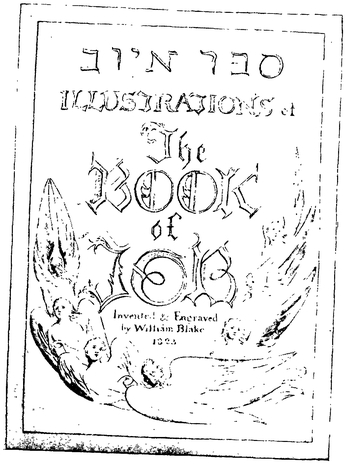
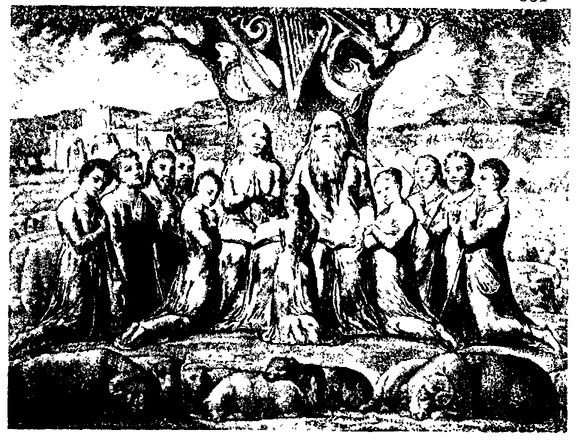
1.
The Letter Killeth
The Spirit giveth Life
It is Spiritually Discerned
The Letter Killeth
The Spirit giveth Life
It is Spiritually Discerned
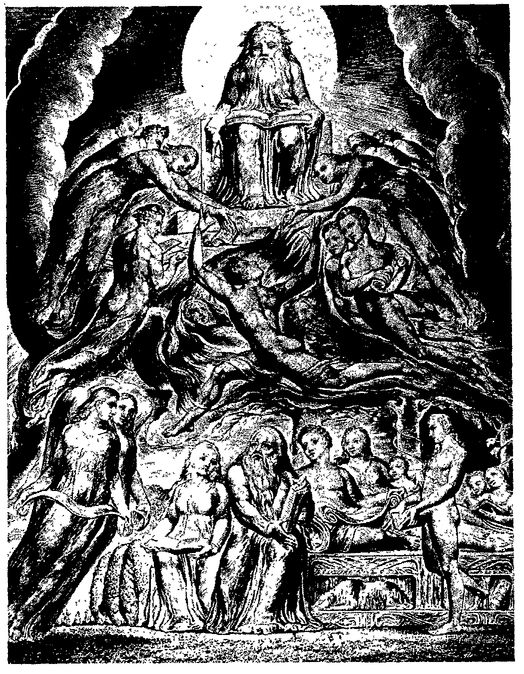
2.
When the Almighty was yet with me. When my Children were about me
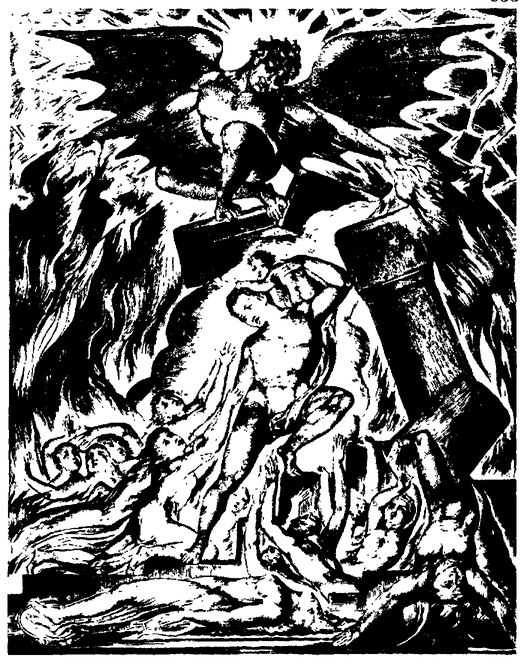
3.
The Fire of God is fallen from Heaven
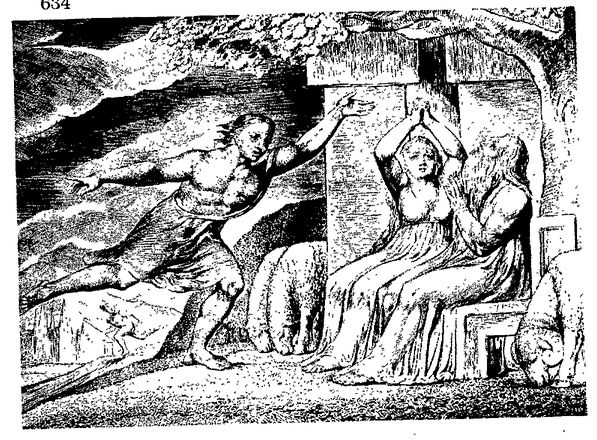
4.
And I only am escaped alone to tell thee
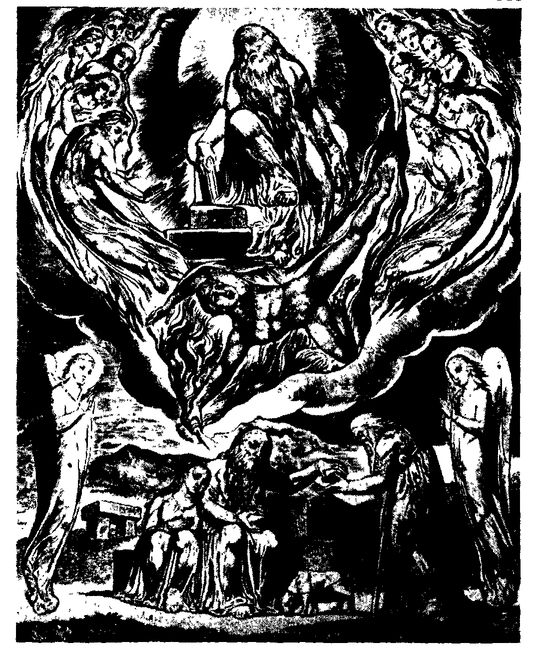
5.
Then went Satan forth from the presence of the Lord
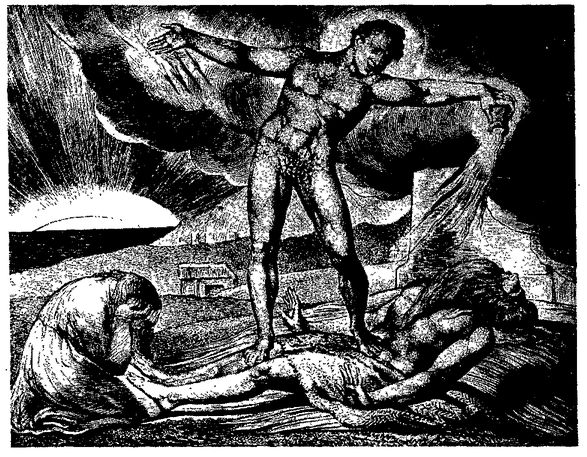
6.
And smote Job with sore Boils from the sole of his foot to the crown of his head
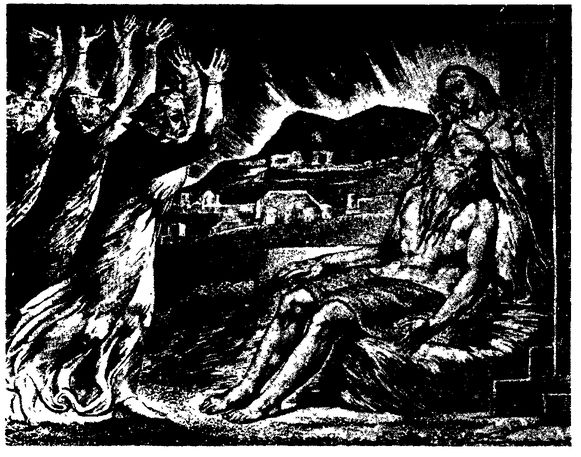
7.
And when they lifted up their eyes afar off & knew him not they lifted up their voice & wept
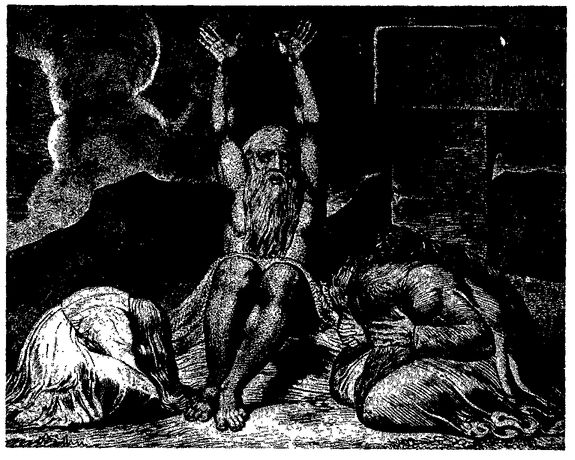
Other books
Goddess Secret by M. W. Muse
Between by Hebert, Cambria
Flirting with the Society Doctor / When One Night Isn't Enough by Janice Lynn / Wendy S. Marcus
Woman of Three Worlds by Jeanne Williams
Ninja by John Man
Restless in the Grave by Dana Stabenow
Triple Witch by Sarah Graves
Apocalypse for Beginners by Nicolas Dickner
En esto creo by Carlos Fuentes
Secrets in the Shadows by V. C. Andrews